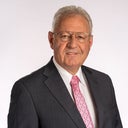Answers (29)
From board-certified doctors and trusted medical professionals
Dr. Tanuj Nakra, MD, FACS

Dr. Tanuj Nakra, MD, FACS
Oculoplastic Surgeon, Board Certified in Ophthalmology
Answer
Dr. Francis X. Fleming, MD

Dr. Francis X. Fleming, MD
Board Certified Plastic Surgeon
Answer
Dr. Richard J. Bruneteau, MD

Dr. Richard J. Bruneteau, MD
Board Certified Plastic Surgeon
Answer
Dr. Jerome Edelstein, MD

Dr. Jerome Edelstein, MD
Certified Plastic Surgeon
Answer
Dr. Joseph J. Castellano, MD

Dr. Joseph J. Castellano, MD
Board Certified General Surgeon
Answer
Dr. Vaishali B. Doolabh, MD, FACS

Dr. Vaishali B. Doolabh, MD, FACS
Board Certified Plastic Surgeon
Answer
Dr. Melissa Chiang, MD, FAAD

Dr. Melissa Chiang, MD, FAAD
Dermatologic Surgeon, Board Certified in Dermatology
Answer
Dr. Houtan Chaboki, MD

Dr. Houtan Chaboki, MD
Board Certified Facial Plastic Surgeon
Answer
Dr. Otto Joseph Placik, MD

Dr. Otto Joseph Placik, MD
Board Certified Plastic Surgeon
Answer
Dr. Raffy Karamanoukian, MD, FACS

Dr. Raffy Karamanoukian, MD, FACS
Board Certified Plastic Surgeon
Answer
More Latisse Questions
See all Latisse Q&AWE SEND PRETTY
EMAILS
What’s trending? Who’s turning heads? Which TikTok myths need busting? We’ve got you. No fluff, no gatekeeping—just real talk. Get our free, unfiltered newsletter.